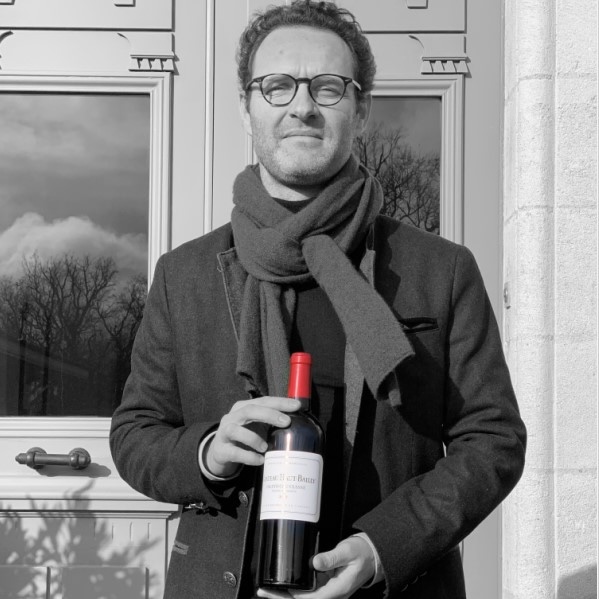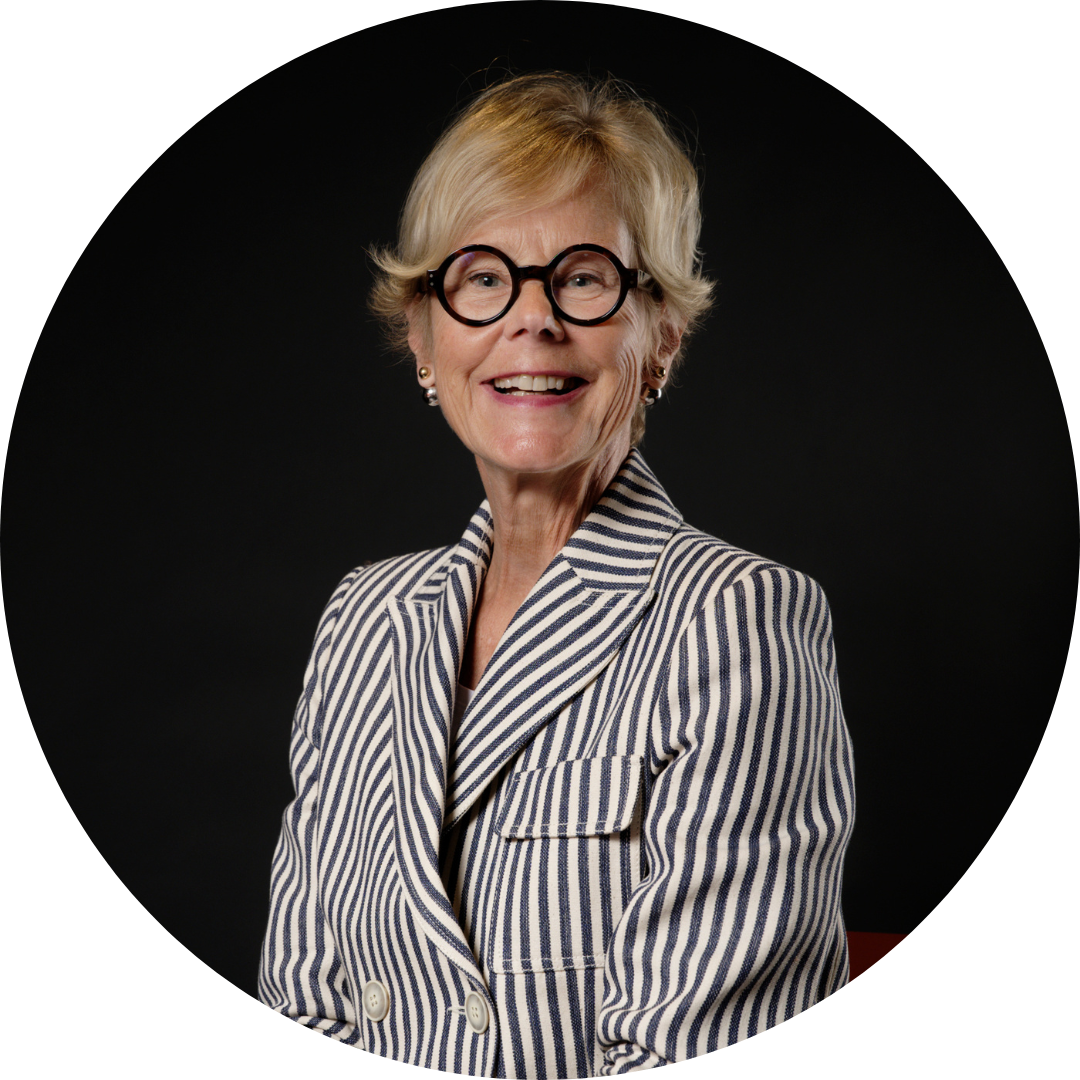Cyprien Champanhet
Head of Sales, Marketing & Communication
Château Haut-Bailly
Grand Cru Classé
Pessac-Léognan
Thanks to a mutual friend, I met Cyprien Champanhet as soon as he arrived in Bordeaux. Our conversations quickly convinced me of his potential, to the point where I introduced him to Véronique Sanders, the president of Château Haut-Bailly. I have always thought that he had the ideal profile to support her, as she represents the third generation of the Sanders family at the helm of the estate, in the development of the brand in the market.
After my interview with Véronique Sanders, available with a single click here: Inside La Place – Demanding Excellence and Quality, it is now time, four years later, to ask Cyprien a few questions. He began his journey at Haut-Bailly during the harvest and winemaking of the extraordinary 2020 vintage.
Presentation
Gerda: What are the main challenges you face in your line of work?
Cyprien Champanhet: There is one main challenge to which I attach particular importance: mastering the distribution chain. From my background in the luxury world with Hermès, I know that when aspiring to be a luxury brand, it is essential to control the entire chain, including distribution. However, the way Bordeaux wines work is very different; it relies on a multitude of intermediaries between us, the producers, and the final consumer. This was a real surprise for me when I arrived here. We neither have complete control nor even a precise understanding of who our final customers are and how our wines are presented.
The first step was to better understand the distribution of our wines. It is impossible to claim to build a brand, and even more so a luxury brand, without knowing exactly how our products are managed. For the past four years, we’ve been doing this work in depth at Haut-Bailly. As soon as I started this process, I was pleasantly surprised by the quality of the distribution already in place. The diversity and quality of the negociants’ clients, highlighted through data collection, were remarkable. In reality, it’s not that this exercise was not performed thoroughly before that the distribution was failing. But better understanding the situation allows us to strengthen our partnership with the negociants and be even more efficient together.
G: Yes, because your success is our success, and that of our client as well?
CC: Yes, our fates are undeniably linked. This exchange of data and information is crucial to optimizing our commercial efficiency. Several negociants have understood this well and trust us, a mutual trust, of course. Thanks to this, we have been able to strengthen our relationships and improve the distribution of our wines.
G: Has everyone been cooperative?
CC: Overall, yes. I took over a situation that was solidly built by Véronique, who, for more than twenty years, established relationships of trust and respect with the negociant houses with whom we collaborate. So it was easy to convince the negociants to engage in this process. One key point remains: CRM (Customer Relationship Management). When distribution is heavily intermediated, managing customer relationships becomes more complex. We have therefore developed a three-tier CRM tool: a first CRM for our direct clients, the negociants; a CRM option to communicate with the negociants’ clients, that is, the importers and distributors; and a CRM tool dedicated to visitors of Haut-Bailly, whether they are professionals or individuals. This is to send them information and prolong the memory of the experience they had with us. This development is relatively recent and, of course, linked to the rise of wine tourism.
G: Is hospitality at the estate a priority for you?
CC: Yes, it is a major challenge and a rapidly growing activity at Haut-Bailly, on which we are placing a lot of emphasis. We are constantly looking for ways to better welcome our visitors because it also contributes to the development of sales across the entire chain, whether for the negociant or the importer/distributor in the various countries where our wines are distributed. It’s not only a local investment; it’s also a lever that strengthens the sales of our wines across the entire industry, globally.
A visit to Haut-Bailly allows the visitor to share a story, an emotion, with their friends. Historically, the doors of Haut-Bailly have always been open. We have a tradition of hospitality, with a true spirit of sharing around the table. Today, we also have an extraordinary tool to showcase. We are delighted to share our work, explain what we do, and engage with our visitors.
* Note: The renowned chef Tanguy Laviale, now the owner of the Ressources and Vivants restaurants in Bordeaux, was the Chef at Haut-Bailly from 2008 to 2012.
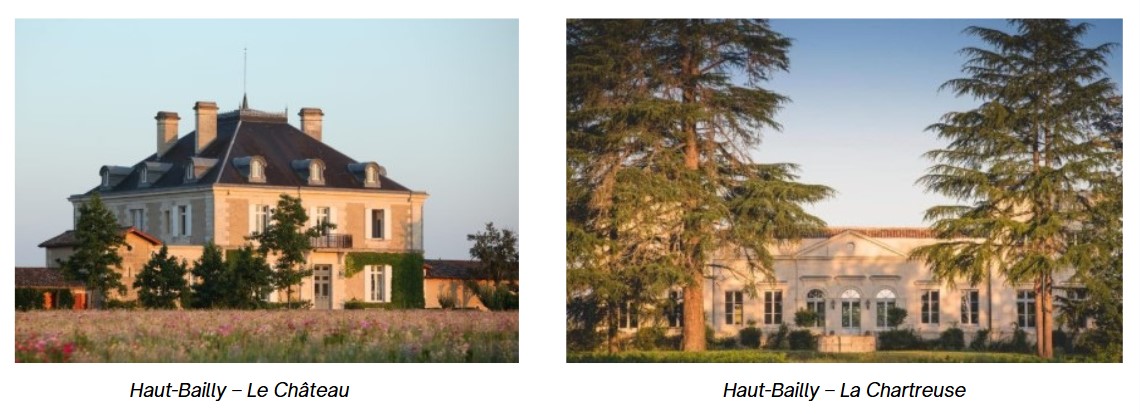
The Business
G: What are your main markets?
CC: Haut-Bailly is present in markets where the culture and knowledge of wine are deep, mature markets, mainly in Europe, including France. This represents about 55% of our sales volume. This is the heart of our distribution. In Europe, our four main markets are France, the United Kingdom, Switzerland, and Germany. The Benelux region remains important, especially due to the Belgian origins of the Sanders family.
G: You mentioned that these are markets for connoisseurs. Do you have to be a connoisseur to appreciate Haut-Bailly?
CC: I didn’t mean it like that. Anyone can appreciate Haut-Bailly, but it is true that it is a wine for enthusiasts and connoisseurs. We have a very high popularity rating with sommeliers and collectors. Perhaps this is also due to the fact that we’ve cultivated a certain discretion, and these great connoisseurs enjoy keeping the secret of Haut-Bailly to themselves.
Another key market is North America, especially the United States, which has always been a strong market and continues to grow. This is probably due to the involvement of the Wilmers family, who has been the owner since 1998, but also because it is a market for great collectors and enthusiasts. North America represents about 25% of our sales. Finally, 20% of our sales go to Asia, a developing market with huge growth potential. We are still not very present there considering the scale of the market. Our customers there are very loyal, but sometimes, we lack the volume to meet the demand from these new markets. That’s the real challenge.
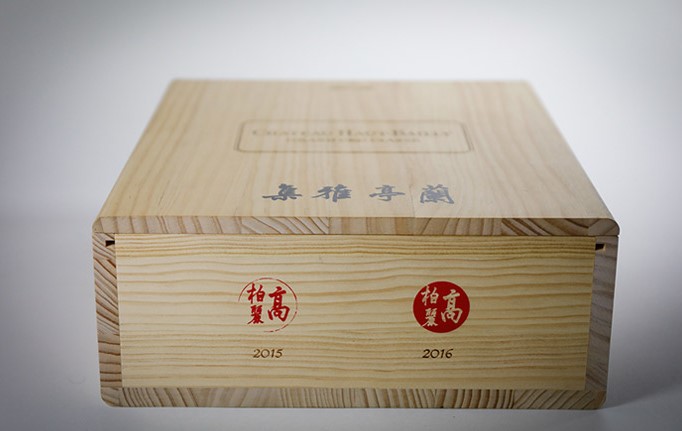 G: But that’s not necessarily a problem, right?
G: But that’s not necessarily a problem, right?
CC: Yes, absolutely. We are very happy with this distribution and the loyalty of our customers. However, in Asia, particularly in China, we don’t yet have the recognition that we have in Europe and the United States, where we are recognized as one of the top wines in the appellation. That’s why we created a special box of Haut-Bailly with Chinese calligraphy. This project went beyond a commercial goal: it was also aimed at strengthening our brand recognition and highlighting the strong link between Haut-Bailly and the world of art and culture. Haut-Bailly is a major patron of several cultural institutions in the city of Bordeaux, and the Wilmers family has always been committed to associating culture and the world of wine. This special box, which contains a bottle of Haut-Bailly 2015 and a bottle of Haut-Bailly 2016, along with a traditional Chinese scroll created by a renowned calligrapher, seemed to be a good way to showcase our commitment to sharing and exchanging between different cultures.
G: Is Asia your priority in terms of commercial development?
CC: Not particularly, we are satisfied with the balance of our distribution. Our priority is to continue fostering loyalty before addressing new markets. It is essential that our loyal customers continue to recognize Haut-Bailly today as they did in the past. But economic and political changes are rapid, and it’s important to open ourselves to new markets. We need to engage with younger consumers and new audiences.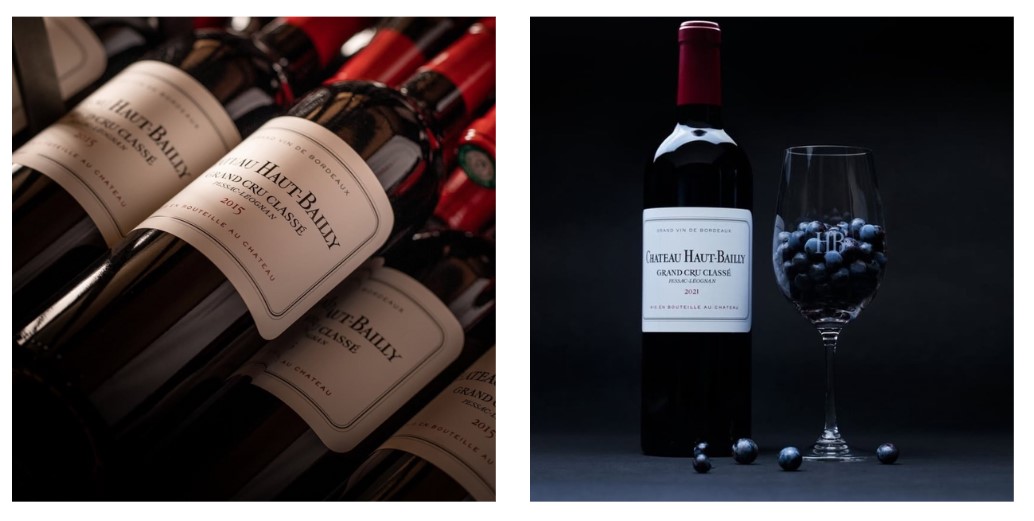
G: Yes, it’s a key question: how can you attract new consumers?
CC: That’s why we offered Haut-Bailly for sale via blockchain in NFT form, to reach a younger audience who are interested in wine in a different way.
G: You now know the market well, as you travel a lot.
CC: Yes, I spend about 40% of my time traveling: five trips of about two weeks each and around fifteen shorter trips in Europe. I’m not the only one traveling, as Véronique continues to travel a lot, as do other team members.
G: Is there another way to attract younger generations, beyond offering Haut-Bailly as an NFT?
CC: It’s essential to appeal to this new generation while staying true to our identity. Haut-Bailly is known for the consistency of its style and quality, so the idea is not to change the wine to please these new consumers, as that wouldn’t be the right approach. However, we can and want to engage them by using new technologies. Bordeaux, and this is something we don’t emphasize enough, is a true platform of innovation in the world of wine, a global reference in this area. Here, education and research go hand in hand. I don’t think the skepticism towards science is a lasting phenomenon, and in this context, Bordeaux has a real asset to capitalize on.
At Haut-Bailly, innovation is everywhere: we have robots in the vineyards, and our new winery is a concentration of technologies and innovations. These are things we need to talk about to the new generation. Additionally, in recent years, there’s been a real enthusiasm for everything related to gastronomy. This should, in turn, carry over to wine. Here too, there’s an opportunity to attract the new generation, and we’re already working on this by collaborating with top chefs from the fine dining world. It’s an excellent way to reach young people: they are fascinated by cooking and the culinary arts, and in culinary arts, there is also the art of pairing with great wines.
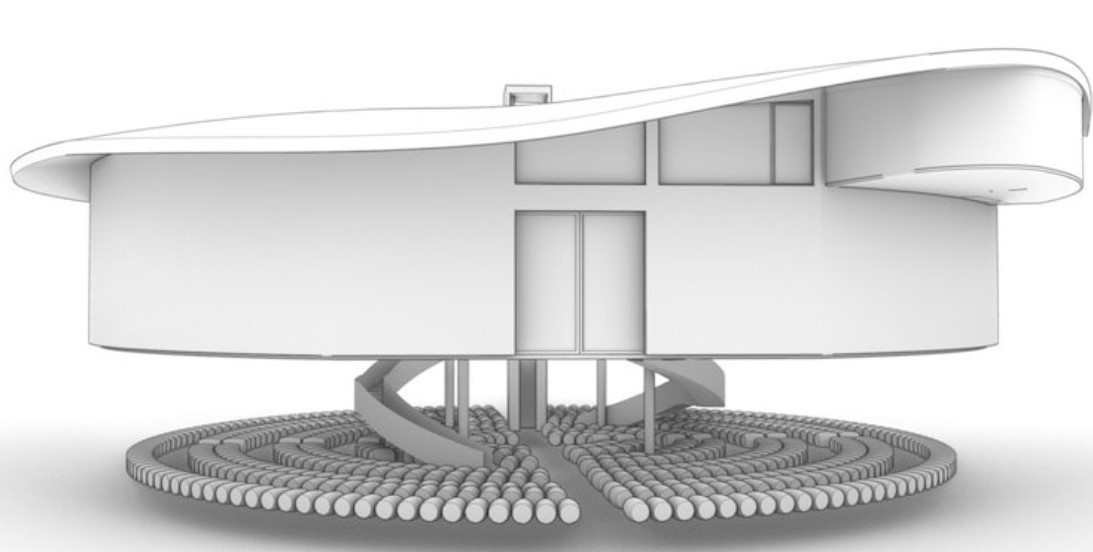
The cellar of Château Haut-Bailly
I am quite confident, because the quality, in Bordeaux in general and at Haut-Bailly in particular, has never been as high and as consistent over time. I read an interesting study on wine that indicates that the 18-35 age group is showing a renewed interest in wine. However, they are very different from previous generations: they are more curious and enjoy discovering a wide variety of wines. This is a great thing, because that’s the true beauty of wine: its diversity. Bordeaux, with its vast offerings, precisely possesses this richness. If we manage to attract this generation, introduce them to this diversity, this innovation, and, of course, the immense quality of our wines, then we will have accomplished something valuable.
Distribution Today & Tomorrow
G: How do you assess the current market situation?
CC: I arrived during the post-Covid boom period. I experienced three years of a generally high cycle. For the past 18 months, we’ve been in a down cycle. I’m not worried. As Jean-Michel Cazes pointed out in his book, the region has always successfully bounced back from crises. The situation is indeed difficult, but it’s not catastrophic.
At Haut-Bailly, we’re fortunate to have loyal clients who recognize the constant improvement in the quality of our wines. We also have loyal partners, wine , who believe in our strategy and our momentum. Furthermore, we are fortunate to have owners with a long-term vision. They’ve been at the estate for 26 years and plan to stay for the years ahead.
Our position at Haut-Bailly is clear: in a downturn, we must not panic and veer off course. While being conscious of and listening to the concerns of our partners, we don’t want to abandon a strategy and momentum that have been built up over the past two decades in just a few months. That would send the wrong signals. I hope that, at Haut-Bailly, we’ve sent reassuring signals to our partners, particularly by strengthening our support in the markets.
For the past 18 months, we’ve never traveled more, organizing tastings, masterclasses, and dinners with our distributors and in partnership with negociants. Last October, six of us from the estate were conducting tastings simultaneously around the world. We are fully invested in helping our partners stimulate their stock. However, we don’t want to flood the market by selling estate stock at deeply discounted prices. This short-term approach would do more harm than good. When the market rebounds, our partners will be grateful that we didn’t contribute to this downturn. Unfortunately, not everyone can afford this strategy. That doesn’t mean we ignore the situation. During the 2023 Primeurs campaign, we reduced our prices by 25%, even though the quality of the wine didn’t justify such a reduction.
G: Yes, I can understand that, but you are part of the Bordeaux Place system, and adjustments need to be made to stay competitive in a very competitive market, even though Haut-Bailly is a unique wine.
CC: Yes, it’s essential to listen to the market while maintaining continuity and planning for the future of the brand. It’s a delicate balance to strike, and not easy, but it’s part of the current challenges. The more structural challenges include recruiting the new generation and continuously building the reputation and desirability of our wines. The quality of our wines continues to improve, and it’s crucial to communicate this. One of Haut-Bailly’s unique qualities and strengths is that our owners only own Haut-Bailly in the wine world. They don’t own any negociant houses or other estates. This shows total dedication to Haut-Bailly and complete independence from the ecosystem.
We remain committed to the Place de Bordeaux, and I find this period very interesting because it allows us to identify who our true partners are and those who understand the direction we are taking, as well as the dynamics and strategy of the estate. It also helps us identify those who need more explanation and those who haven’t embraced our vision. In a way, it helps us sort things out. With our real partners, we strengthen our ties at every level. The goal is not to undermine the Place de Bordeaux system, which remains one of its greatest strengths.
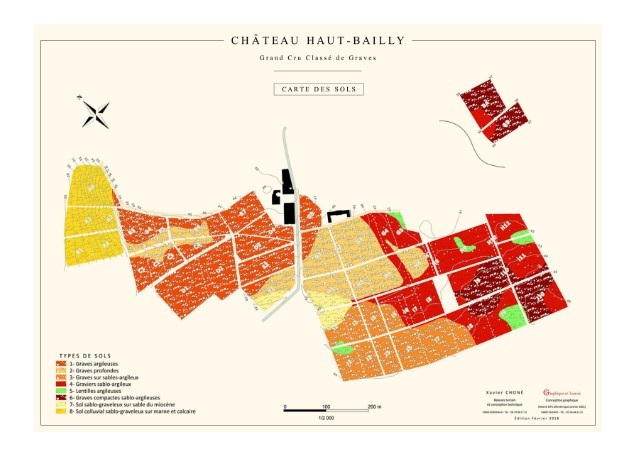
G: How did the 2023 Primeurs campaign go?
CC: We released quite late, which allowed us to observe what was happening.
G: That’s part of the estate’s strategy, isn’t it?
CC: Yes, we can revisit that strategy because some châteaux were able to capture immediate sales. However, our strategy allowed us to observe that demand was sluggish. Despite sometimes significant price reductions, demand didn’t follow. We took this weak demand into account and put less wine on the market than usual to avoid flooding a market that didn’t need to be saturated. We heard the call for price reductions from the market, but we didn’t want to discount a vintage that we believe ranks among the great vintages of Haut-Bailly. This approach was well understood and generally accepted by the majority of our partners. We are quite satisfied with the outcome of the campaign. I regret that Bordeaux didn’t manage to highlight all the qualities of this vintage. We’ve talked too much about prices, pulling vines, mildew. We’re very good at focusing on everything that goes wrong and beating ourselves up all day. We struggle to agree on positive communication, even though there is so much good in Bordeaux. This was the case with 2023, and I think this vintage is a great deal for those who bought it.
Harvest 2024
G: You mentioned the style of the 2024 vintage. Could you also say a few words about the harvest?
CC: The spring season required significant involvement and responsiveness from our teams. For several years now, we’ve faced strong mildew pressure, but it has been perfectly managed by our winemakers. We’ve suffered almost no damage from mildew.
It’s not talked about enough, but the summer was beautiful, with very low rainfall and marked temperature fluctuations. When you look at the temperature curves for minimums in June, then July and August, they are below the averages, while the maximums are above. This created significant thermal amplitudes, which we particularly appreciate because it helps preserve freshness while reaching an interesting level of ripeness. The summer of 2024 is somewhat overlooked, overshadowed by the rain in September, but it was quite dry and really positive for the ripening of the grapes.
The harvest lasted for 3 weeks, from September 18 to October 5. We noticed that the “magic slope” of Haut-Bailly, which makes up the majority of our vineyard, once again produced very beautiful fruit. It’s a great terroir, well-drained and well-ventilated, which was key in the oceanic conditions we experienced. Thanks to our demanding teams, we were able to harvest grapes of very high quality. Working on a great terroir, having well-trained and attentive teams to ensure rigorous selection, and having extremely precise tools for direct vineyard fermentation were all essential conditions for the 2024 vintage. The yield is quite good, around 30 hectoliters per hectare (which, on average, has been around 38 hectoliters over the last 20 years). We remain quite consistent in the proportion of Grand Vin, which each year represents between 50 and 60% of total production, thanks to our beautiful slope, but also our desire to clearly differentiate the style of the First and Second Wines. Haut-Bailly is made with a higher proportion of Merlot, while the Grand Vin contains more Cabernet Sauvignon. Even though we have very beautiful Merlots, we don’t include them entirely in the Grand Vin, as it would risk altering its expression and style, and we are known for the consistency of our style.
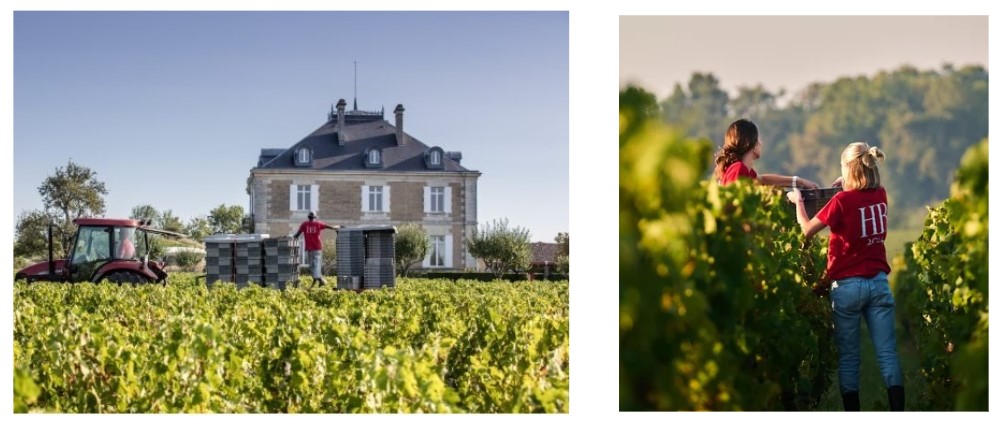
Last Words
G : It’s been nearly five years that you’ve been working for Haut-Bailly. What makes this wine unique for you?
CC: It’s a combination of things, sometimes an alliance of elements that might seem opposite. In fact, for me, it’s a definition of luxury. Modern society tends to dictate binary choices: do we prefer tradition or modernity, craftsmanship or creativity? Are we governed by functional concerns, the values of use, or do we accept art for art’s sake, aesthetics, and sensuality as a decision-making criteria? The essence of luxury is transcending these choices, offering a rare synthesis. That’s what I believe Haut-Bailly provides.
Our wines have a certain power, but with a lot of delicacy. Precision, but also opulence, which might seem contradictory. Depth, but also a beautiful fullness on the palate. Haut-Bailly is the union of attributes that appear to be opposing but are brought together, whether in the places or the wines, regardless of the vintage. This is what moves me at every tasting and what makes me so happy to speak about Haut-Bailly, year after year, with all the markets and our partners.
Gerda BEZIADE has an incredible passion for wine, and possesses a perfect knowledge of Bordeaux acquired within prestigious wine merchants for 25 years. Gerda joins Roland Coiffe & Associés in order to bring you, through “Inside La PLACE” more information about the estate we sell.

